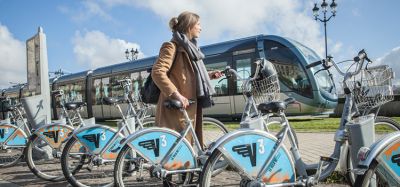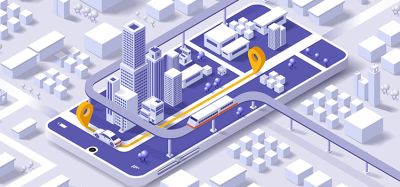Integration is the key
- Like
- Digg
- Del
- Tumblr
- VKontakte
- Buffer
- Love This
- Odnoklassniki
- Meneame
- Blogger
- Amazon
- Yahoo Mail
- Gmail
- AOL
- Newsvine
- HackerNews
- Evernote
- MySpace
- Mail.ru
- Viadeo
- Line
- Comments
- Yummly
- SMS
- Viber
- Telegram
- Subscribe
- Skype
- Facebook Messenger
- Kakao
- LiveJournal
- Yammer
- Edgar
- Fintel
- Mix
- Instapaper
- Copy Link
Posted: 19 October 2016 | Martin Russ, Managing Director, AustriaTech GmbH | No comments yet
What will future mobility systems look like? How can urban pubic transport stay reliable and comfortable? How will mobility behaviours change over the next 10 years? There will not be just one answer, but what we can say for sure is that we need a more integrated look at all of these issues. Over the past year ITS Austria has focused on how to transform an intelligent transport system into an integrated mobility system.


With current trends such as sharing, automated driving and digitalisation, there is a strong need to identify future fields of action for the continued development of an intelligent transport system. Sustainability and environmentally-friendly transport – especially in cities – has to be combined with user-centred solutions and the option to choose. The output of this one year ongoing stakeholder process was a roadmap including the potentials of the so-called ‘Mobility as a Service’ strategy and an integrated mobility system.
When we look at existing services and possibilities of public and individual transport in cities, there are many good solutions and some widely-developed infrastructure, with each mode being well coordinated. The real potential lies in the combination of all existing modes and the ability to offer linked and integrated services with tailormade solutions to seamlessly combine the travel options of different providers and to include one single access payment. The idea sounds great, but how easy will it be to realise this vision?
The first steps towards an integrated transport system in Austria were made in 1984 when the federal states of Vienna, Lower Austria and Burgenland harmonised their timetables and rates. However, integration nowadays means a lot more. One project that has already been deployed is ‘KombiMo II’ – a project funded by the public transport operator in Graz. They developed so-called multi-modal hubs that combine public transport with other services such as car-sharing, bike-sharing and e-taxis with several trains or bus stops having these additional services available. The users have one mobility card which allows them to book and pay for any service. The first multi-modal hub was opened in September 2016 and four more are due to follow.
Another project with a similar approach was ‘SMILE’ where different services of public transport in Vienna – train, bike and sharing services – were combined in a single app. Based on the SMILE developments, the Wien.Mobil mobility platform combining all these mobility services together with new sharing and ticketing concepts is in operation and provided as an app to travellers as well. The mobility platform integrates various means of transport service and combines them with a common route planner and ticketing feature.
In order to develop such solutions, data – in various forms and content – are necessary. It also means bringing different stakeholders together to set up long-term processes. The operators must be willing to share their information (or data) and jointly develop interfaces. The efforts are often great, but the benefits for the users are even greater. Users get a more efficient way to plan their travel and the existing infrastructure will be used in a more effective way. This is especially true for urban areas where those services can contribute to reducing the need to own a car; helping to make transport safer; and guaranteeing mobility for every single user, which results in reducing negative impacts. One of the most well-known examples in Austria is the Traffic Information Austria project (‘VAO’ – Verkehrsauskunft Österreich). The national-funded project was set up in 2012 and is now operated as a platform. The aim of VAO was to develop a single intermodal traffic information platform for the entire country, including public transport data, traffic situations and traffic information. In 2015 the platform advanced to focus on real-time traffic data. However, these data alone will not make a service. Instead, partners could use the platform and add their specific traffic related information. Today approximately 18 services and apps based on VAO are available. Route requests have increased to three million per month in 2016.
But what can success stories such as this show us for future mobility solutions?
We need clear policy goals and the commitment of all partners to create an open framework for experimentation and learning. The first steps will be to start with pilots and ‘living labs’ and to later scale-up. We must therefore work together – policy, research and industry – and of course between all modes. We have to face the crucial challenges together and take into account that it will take time to develop and establish these new solutions, as well as for the users to familiarise themselves with these new ways of utilising mobility, without losing the freedom to choose. There are many exciting years and ground-breaking activities ahead of us.
Related topics
Multimodality
Issue
Issue 5 2016
Related cities
Austria
Related organisations
AustriaTech
Related people
Martin Russ








